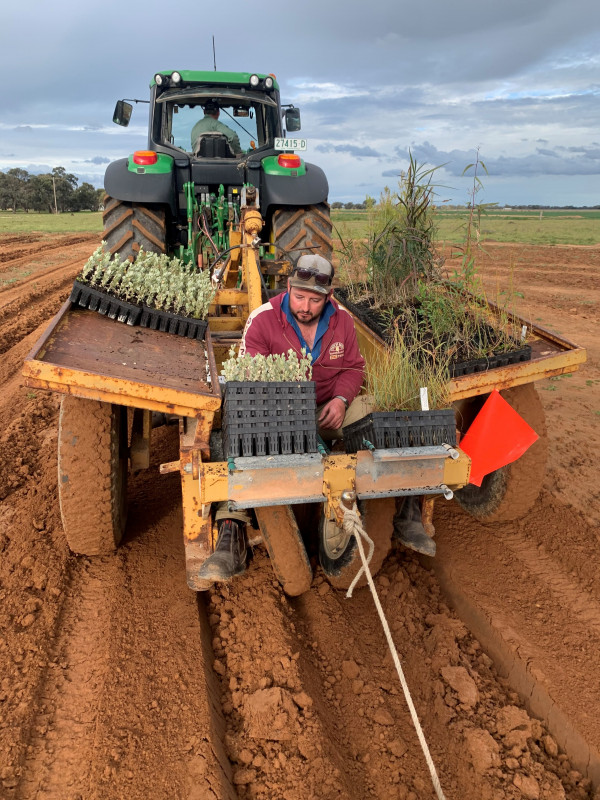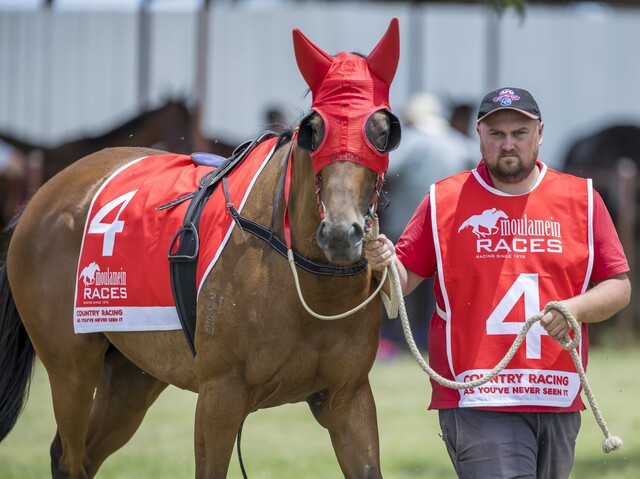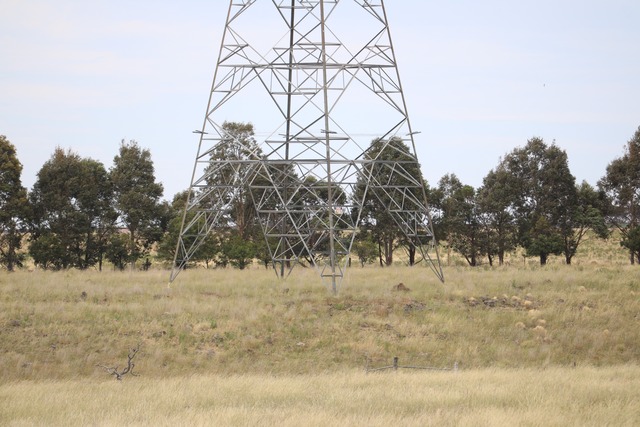Originally Published May 27 2022
IF you think you might have trouble finding Wakool in downtown NSW, you probably have absolutely no chance of tracking down Tullakool.
But Stacey and Marc Brooke are doing their best to put their little slice of native flower paradise on the map.
Tulla Natives (no prize for guessing where that name came from) was born out of the most serendipitous of unexpected opportunities when the property they purchased came complete with about 30 acres of unused sandy country.
Well unused has proved to be a little too dismissive as the dismissed 30 acres has become the foundation of the plant business and in barely five years has been converted from hobby patch to a small farm business that now has the potential to become a pretty big business.
Stacey said basically they built a small greenhouse and germinated our own seed to grow our own cut flower and foliage varieties. this led to continuing to grow native plants which turned into the nursery and production we have now.
And that was the end of steps, now Stacey and Marc are doing a lot of running to try and keep up with their own expansion – and ahead of their long-term plans.
Marc said first up was the process of getting the cut flower plantation in the ground and that involved germinating their own seed to ensure reliable plant stock.
“Eventually, after the plantation was complete (or so we thought); we continued to germinate our own seed and this led to creating the nursery we have today,” he said.
“We are still expanding the cut flower and foliage plantation due to increasing demand and in the nursery to date, we grow a huge range of tree line and revegetation varieties as well as garden varieties and everything in between.
“We are proud to supply stock to local schools, farms, garden enthusiasts, other local business and various government and private organisations.”
At the time of writing that means two hothouses (each 280sqm) for cutting, striking and seedlings and eight industrial shade houses for growing them out.
But one of the best – and biggest – decisions Team Tulla has made was its relationship with WA based Chatfields Nursery, run by Dustin and Lisa McCreery.
Because that is where Anameka – the born-again old man saltbush – was really making its mark in the local farming scene.
Stacey said CSIRO had done a lot of work converting the traditional saltbush into an elite native forage plant and appeared to have achieved that with this plant.
She said researchers had looked at plants around the country and selected the best traits each had to offer.
“The traditional saltbush is not a perfect plant; but it has been the saviour of many flocks in time of drought over the decades,” Stacey added.
“The new version, however, doesn’t grow as tall and woody as traditional old man saltbush and offers more biomass above the root system, with greater palatability.
“It is in incredibly high demand due to its success so far, as this is our third season growing it, and each year gets bigger and bigger.
“We now send it as far afield as southern Queensland and northern NSW and from South Australia to across the Riverina – if managed correctly the bush will top out at around 1.5m if allowed to.
“After the seedlings have been through our establishment program – they are all grown from cuttings – the ones we send off are about 12-15cm above the root system.”
Laboratory analysis indicated sheep selected saltbush genotypes with higher digestibility of organic matter and lower salt.
When compared with the original ‘wild’ populations, the best 12 saltbush selections had 20 per cent higher digestibility, lower salt and produced eight times more biomass.
Among these elite shrubs, sheep still showed clear and consistent preferences; likely to be associated with mineral profiles and plant secondary compounds. Out of the 12 ‘finalists’ Anameka was the one commercialised.
Anameka is ideal to fill the late summer to early winter feed gap and can substantially reduce supplementary feeding costs, allowing deferred grazing of winter pastures and boosting pasture productivity.
In other words, it can give you a living haystack and as it is high in vitamin E it means healthier animals and better meat quality (it is also a good source of other essential minerals).
Stacey said it responds well to summer rainfall and helps reduce water table recharge and salinity.
“After initial planting, there are very few extra costs with this plant; and it will give you more than 20 years if managed well. (based on Atriplex Nummularia field plots).
Tulla Natives has gone hard at the farming market, apart from saltbush, with a lot of emphasis on tree-line varieties as more and more landholders start to reconsider how they can best protect their land while still maintaining production.
As evidence continues to mount on how well livestock does if there is plenty of shelter in paddocks, even the more sceptical farmers are starting to buy trees – and lots of them.
Reports from CSIRO’s work on research sheep with access to Anameka has shown a 19-24 per cent increase in wool production when compared to sheep grazing stubbles, dry pastures, or moderate quality cereal hay.
Stacey said where tree sales to farms would once have been in the tens and twenties they are now in the hundreds and the thousands.
Production accounts for half the setup at Tullakool, with its large variety of Australian natives to suit all soil types at low prices, growing most varieties endemic to the area, plus many others to ensure they can cover a variety of soil types and growing requirements.
“Today I would say our business is about one third saltbush, one third tree line and one third the garden/nursery,” she added.
The nursery has also been seeing significant growth with the expansion into cut flowers and foliage plantation.
“We grow our stock from locally obtained seed when possible, and we sow directly into Lannen and Colmax cell trays. These trays are great, as they allow for a deep root system to ensure strong, healthy plants. They also air prune, so can sustain healthy plants for a longer period of time, and they do not encourage spiralling root growth like other types of trays can.”
Tulla Natives supplies local event-styling businesses, as well as corporate events and individuals for events such as weddings, birthdays, and business meetings/conferences.
They have also become contract planters, using purpose-built machinery developed by the Chatfields in WA. With a few modifications by Marc, the Chatfield Nursery Planter can rip, disc and plant in the one pass, and depending on soils can do as many as 8000 trees in a day.
This season, they have begun planting the 110,000 plants in areas ranging from locally to Maude to Balranald – and everywhere in-between.
Meanwhile, back on those sandy rises, Stacey and Mark have also devoted a lot of the past four years to building up that cut foliage and flower plantation and are now supplying markets with a volume product.
Mostly they supply bulk foliage and a small number of flowers to event stylists and organisers, companies and organisations for corporate events and functions, other local businesses, and individuals for celebrations.
“We are working hard to ensure we are able to eventually have a yearly continual supply of flowers as well as the foliage,” Marc said.
“At this point, our flowers are seasonal depending on the varieties. Some already available include many varieties of Protea, Leucospermum, Banksia, Eucalyptus, Hakea and Leucadendrons just to name a few,” he said. “Our foliage is sold by the bucket, or by the bundle depending on your requirements.
“We stock many varieties such as Eucalyptus Tetragona, Acacia Podalyriifolia, Eucalyptus Gunnii, Eucalyptus Caesia (Silver Princess), Eucalyptus Cinerea and Eucalyptus Pulverenta just to name some of the more popular varieties.
And you know you must be doing a good job when a customer turns up looking for a hybrid plant Tulla Natives does not stock.
We apologised and explained we didn’t do those types of hybrids and suggested she try Bunnings,” Stacey said.
“She told us she went there first; and they told her to come and try us,” she laughed.







